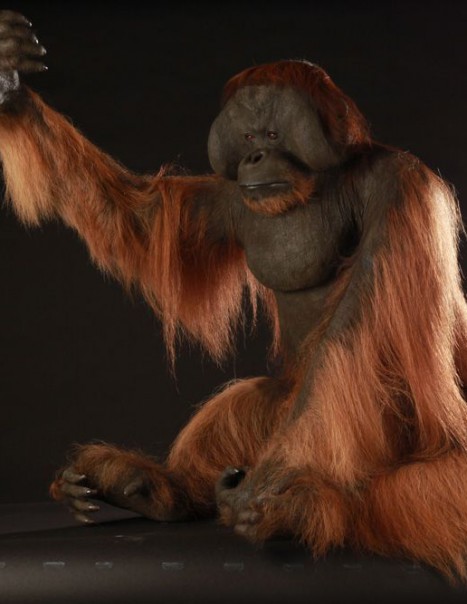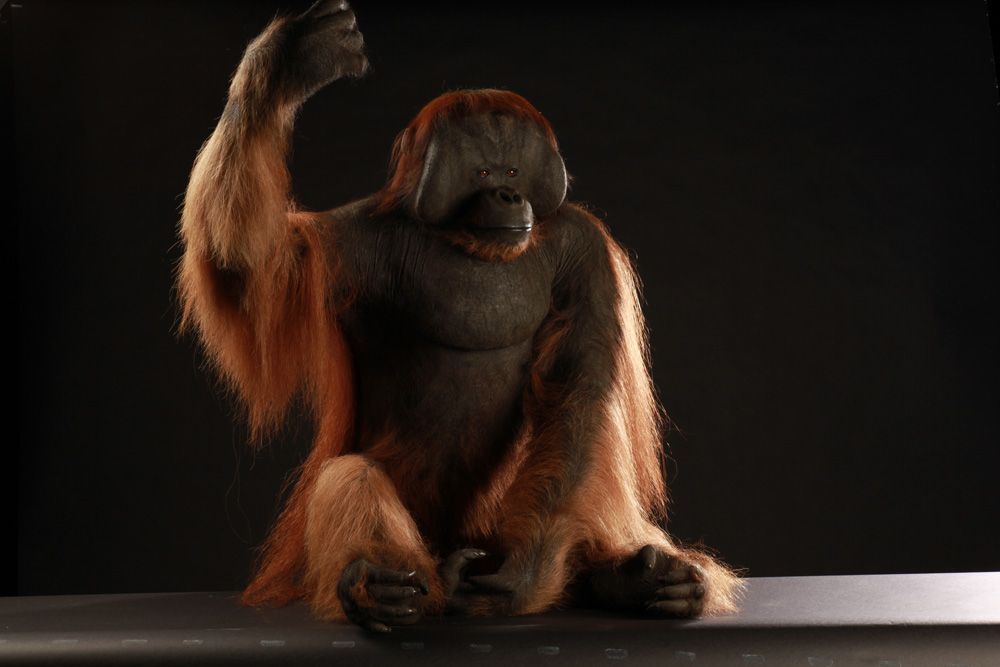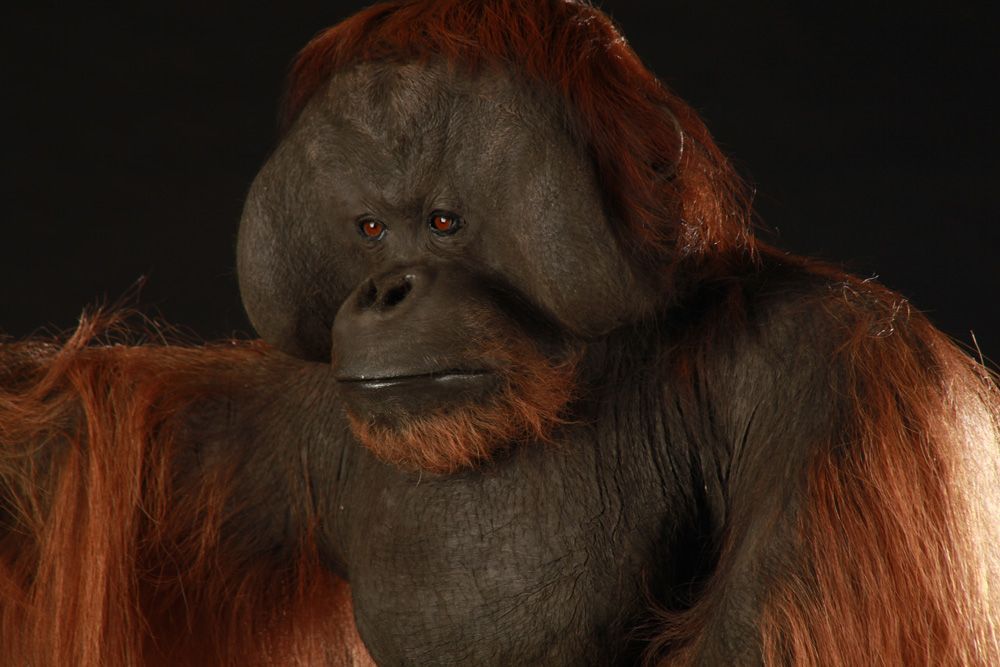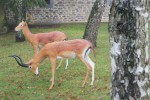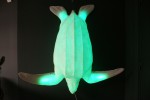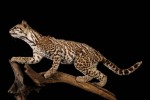Orangutan – Pongo Pygmaeus
Orangutan – Pongo Pygmaeus
The species of this genus are found in Sumatra, Borneo, Indonesia, and Malaysia. Formerly it was also found on the island of Java. The scientific names of the two species are the Orang – utans in Sumatra – Pongo abelii Lesson, and Orang – utans of Borneo – Pongo pygmaeus.
The average size of the orangutan is 1.10 to 1.40 m for 40 to 80 kg. They can live 30 to 40 years. Gestation lasts 245 days. Young orangutans traveling hung back or womb for more than two years. Births are spaced with a gap of about eight years on average. They spend most of their time in trees, looking for food. The animal feeds most of the time on fruit, shoots, bark, small vertebrates, bird eggs and insects. Every night they make a new nest perched between 12 and 18 meters above the ground.
They are remarkably intelligent.
Product Description

